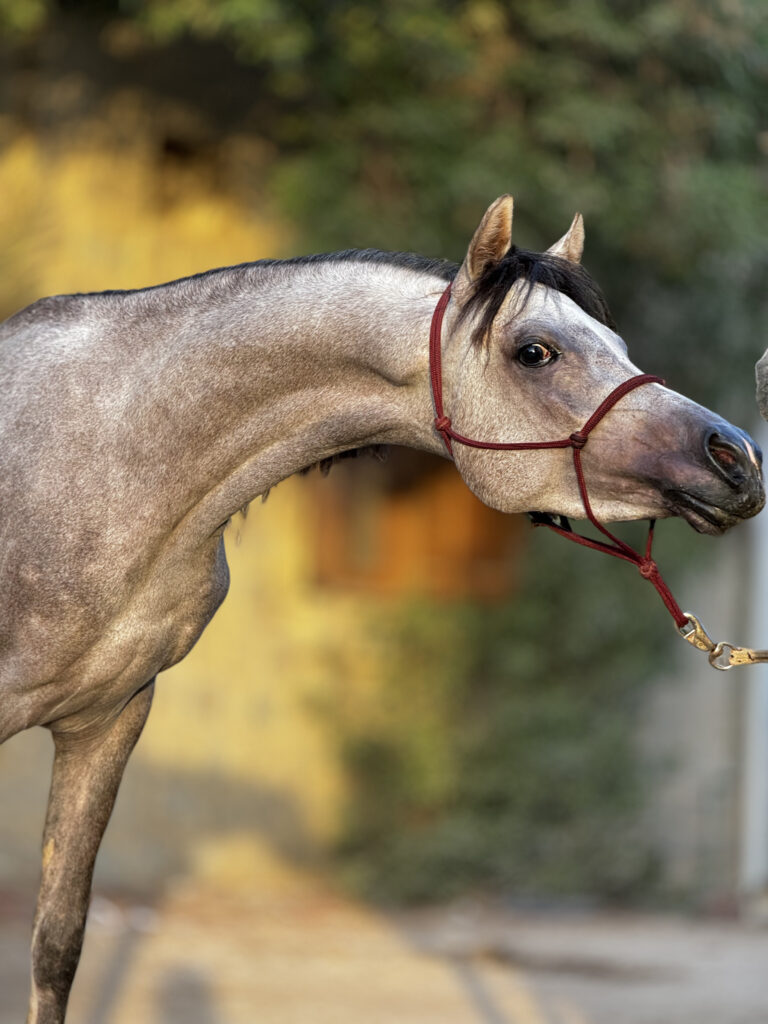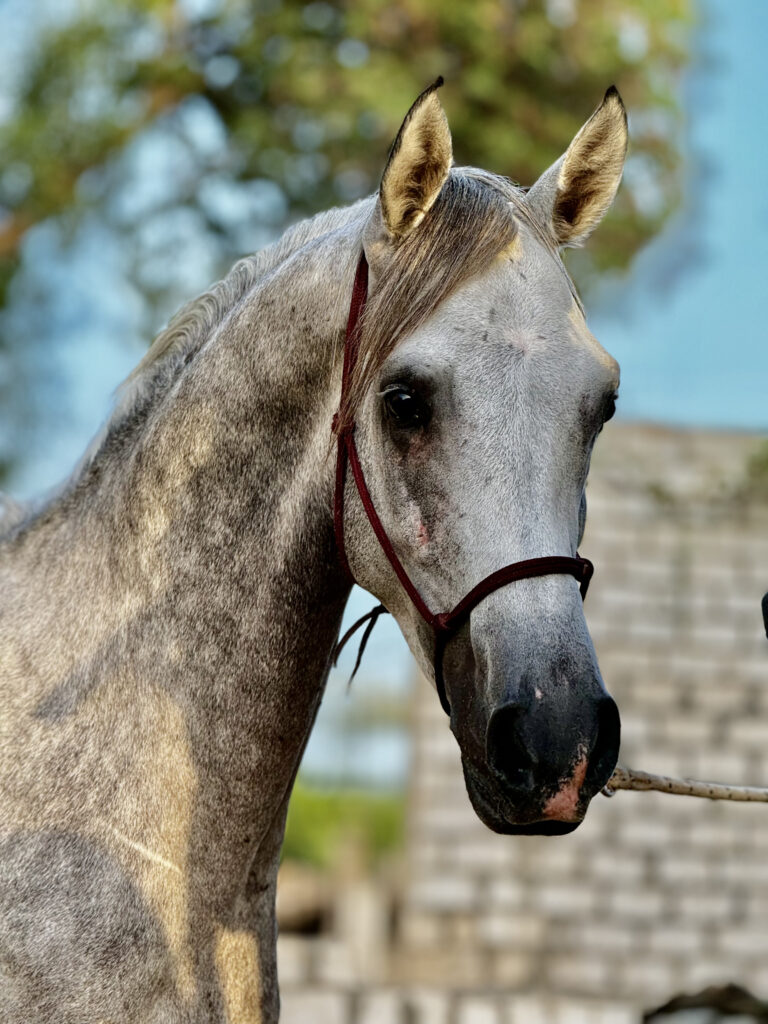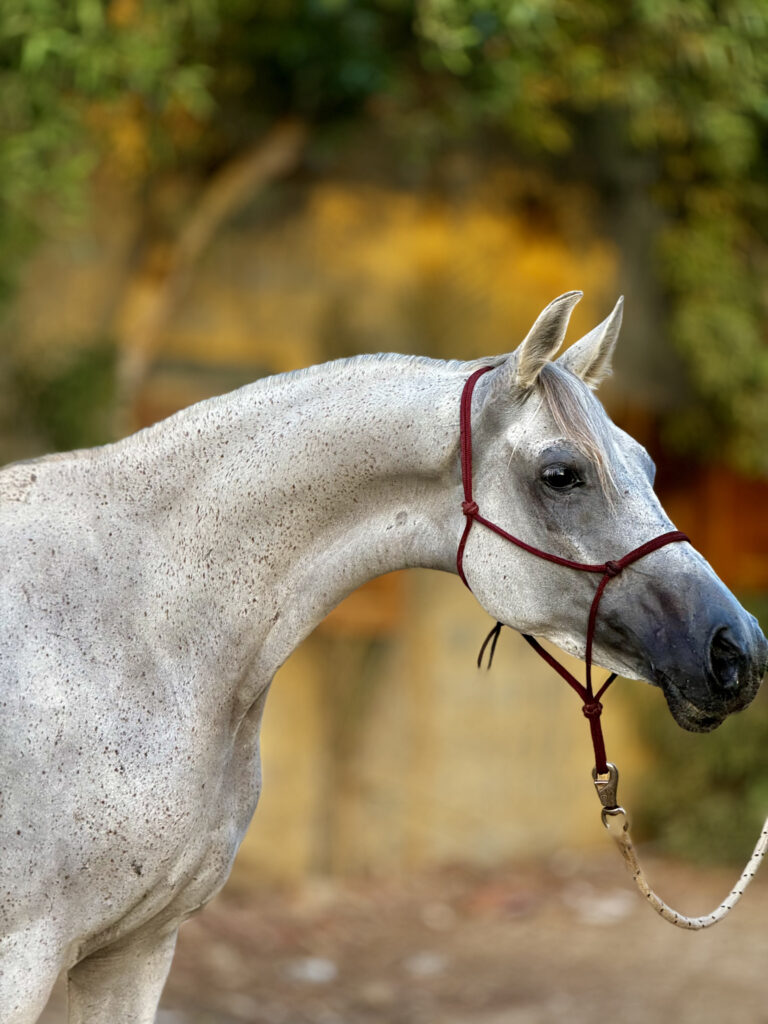Learn more about the Arabian horse breed's history...
Words to one of us, from an old and wise Bedouin man, somewhere deep in the desert : « there is an old Bedouin saying, that goes: the horse is God’s gift to humanity ». And for all of us at Stable Tunis, this is for sure true.
The Arabian horse is one of the oldest horse breeds, it has known centuries of history across the desert lands of the Middle-East and North Africa, before arriving on the coasts of Europe and other regions of the world. The Arabian horse is part of history, has a huge space into Arab cultures and Islam, is part of a myth of the desert, where 1001 stories are born…
Let’s talk about our majestic horses we are so proud of !

Although Arabian horses can be seen in the art of ancient Egypt dating back to more than 3,500 years, and also in the other civilizations of the Middle-East, it was the nomads of the Arabian desert, the Bedouins, who created in the first place and refined the pure breed of horses that exists today. The camaraderie between man and horse in Saudi Arabia runs deep because they lived together in the desert for so long. In fact, Arabian horse owners were known to share their tents with their steeds as if they were members of one’s own family. They were also known to be able to survive, both men and horses, with only dates and camel milk in some extreme times deep into Sahara.
Regarding the link between the Arabian horse and Islam, it is said that Prophet Muhammad himself urged his followers to treat their Arabian horses with respect and kindness. If we assume that thoroughbred Arabian breeding began during the lifetime of the Prophet Mohammed or established a new tradition, then the lineages have existed for around 1400 years. We can read some stories, such as the one in which Mohammed tested the strength and loyalty of his horses, by releasing the thirsty animals after a fight, so that they could quench their thirst at a watering hole. While they all ran away, he called them back. Of the horses released, only five mares turned back, who first followed the call of their master and not their own needs. They are known as “Al Khamsa” – the five with whom breeding selection began. Breeding was in the hands of the Bedouins for centuries. From these, five different types of Arabian horse were formed, each with distinctive characteristics, but all as beautiful as the other one.
Moreover, the Quran says:
When the creator wanted to create the horse, he said to the wind: « I want to give birth to a being from you that is suitable to carry my admirers. This being shall be loved by all my subjects, but it shall be feared by all who violate my commandments. »
And he created the horse and called to it: « I have created you without equal. All the treasures of this earth lie between your eyes. You shall trample my enemies under your hooves, but you shall carry my friends on your back, which shall also be the seat from which you can ascend to me in prayer. You shall be happy on the whole earth and preferred over all creatures on this earth, for you shall have the love of the Lord of creation. You shall fly without wings, you shall conquer without a sword. »
Beautiful and emotional, isn’t it ? That’s why, when we say Arabian horses are sacred in our culture, it is not a lie. Respecting your horse, treating him as good as you can, shall help you go to paradise, God’s willing.

Let’s continue with history. So, as we said, Arabian horses have been the loyal companions or Arab bedouins and other Arab communities since always, if we may say. But how did they become so famous in the whole world, for their beauty, power, and endurance ?
First of all, the Arabian horse directly caught the attention of the Greeks, the Romans and the Persians, who were the first foreign civilizations to come and stay in the Middle-East and North Africa regions. Apart from ancient drawings, carvings and paintings from the Egyptian or other Middle Eastern civilizations, which obviously show Arabian horses, recognizable by their delicacy and fierceness, we can recognize the Arabian horses in some Greek and Roman paintings, and mostly statues. In some Egyptian wall inscriptions, we can even sometimes have Greek horses’ drawing style, for example somewhere hidden in the Nobles’ tombs in Luxor…Regarding the Persians, they developed their own Arabian horse breed.
Then, in the Middle-Ages, Arabian horses gained a special reputation in Europe because of their characteristics, which the heavier fighting horses and palfreys lacked. But how did the Europeans met the Arabian horses ? Well, it was the Moors in Spain and the Crusaders in the Levant who made Arabian horses a sought-after object. The first Arabian horses came to Europe as gifts from the nobility or war booty, and rarely as trade goods. Here, they were crossbred with other horse breeds. In the 18th and 19th centuries, Arabian breeding took off in Europe. At first, individual breeding horses were bought in various Arabian countries and mixed with regional horse breeds in order to breed out certain characteristics and traits. Mixed breeds emerged, such as the Anglo-Arabian, the Shagya-Arabian, and Arabian half-bloods. Then more emphasis was placed on breeding purebred characteristics and the first Arabian stud farms were established. The continuation of a breeding line led to the emergence of a separate breed, for example in the case of the Shagya-Arabian. Nowadays, a lot of different breeds of pure Arabian horses exist, made through the time and different crossings. You have for example the Tunisian Arabian horse, well known for its qualities for the endurance competitions, the Egyptian Arabian horse of course, the Saudi one…
In the most recent centuries, Arabian horses have been used to create, of course, the race horses. All race horses, such as the most famous English thoroughbred, have a very high percent of Arabian blood, needed for the endurance and the speed. All sport horses, also have some percent of the Arabian thoroughbred. If we continue on, actually all purest thoroughbred, all of the most beautiful ones, the most famous ones, have been crossed with the Arabian horse, such as the Spanish thoroughbred, or the quarter-horse from America. Actually, horses didn’t exist on the American continent. It was the European settlers who brought them during their invasions. As the Spanish were the first ones to arrive on the American continent with Christopher Colombus, they brought Spanish horses. And which thoroughbreds did help create the Spanish horse ? Well, again, the Arabian horse… Thus, all American horses are also descendants from the Arabian thoroughbred.

We could actually talk for hours about the history of the Arabian horse. So many examples, so many stories… that we would love to tell you on your next visit, Inch’Allah !
We would be honored to present to you our Arabian horses. Indeed, all of our horses without exception have a huge percent of Arabian blood, even if most of our horses are not pure. A 100% pure Arabian horse is actually very expensive ! In Egypt, and also other neighbor Arab countries, you can distinguish them by their tattoo on the neck, proving they are from 100% pure line… Also, papers are needed to get the tattoo, which is not always easy in our country. All of our horses presented in this article are pure blood, but without all papers, so without tattoos.
Our Arabian horses are at home with us, in their countries of origin, in their natural habitat. They are the best to go to the desert with, and they make it possible for us to enjoy full speed gallops in the desert, where the ground allows us to run safely, and to go for 5 hours trips deep into Sahara. No other breeds would be capable of doing that. Their shape and physic is actually from the desert. To give you an example, a physical aspect that Arabian horses have, which other horses don’t have, made by the life in the desert and for the life in the desert : their nostrils are bigger than the other horses’ ones. Indeed, being bigger, they allow the Arabian horse to catch more oxygen, when temperatures go high, or when its needed to catch their breath the fastest possible.
Arabian horses are born in the desert, they are from the desert, they belong to the desert, and they forever will.
Welcome to Stable Tunis and our adventures !
